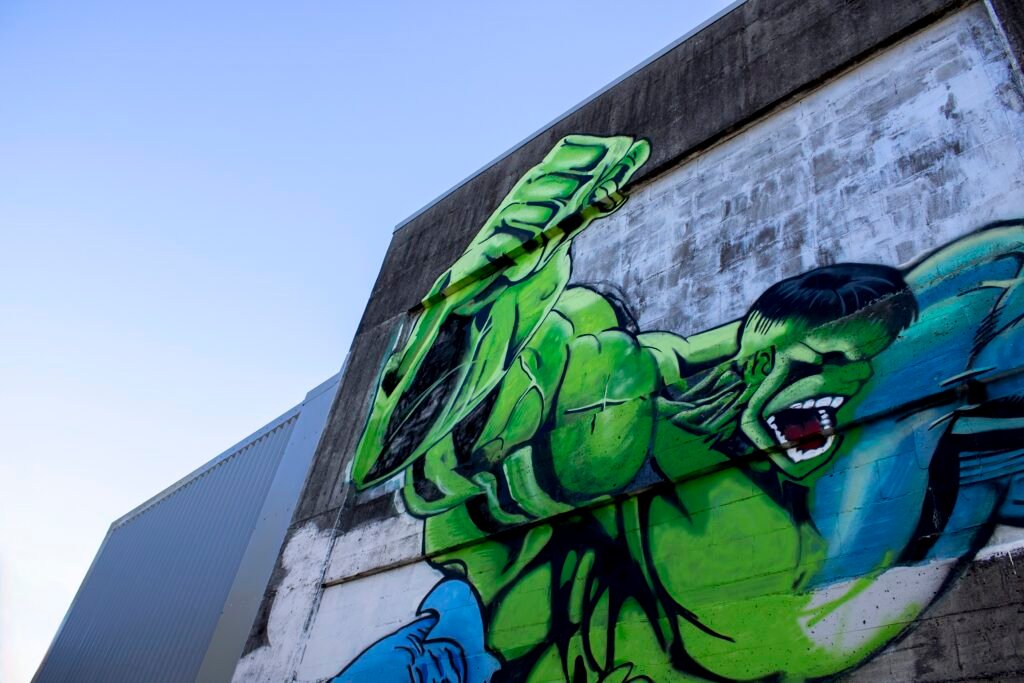In “The Influence of Pop Culture on the Public’s View of AI,” it becomes evident that the public’s perception of artificial intelligence is largely shaped by movies and pop culture. From dystopian narratives featuring machines turning against humanity, to autonomous robots that seamlessly replace human labor, these fictional scenarios often overshadow the real risks associated with AI development. Meanwhile, multinational corporations in Silicon Valley are striving to create autonomous AI systems to minimize labor costs. However, what is often overlooked is the heavy reliance on underpaid gig workers, who face precarious conditions and labor exploitation. From data labelers to content moderators and delivery drivers, these workers are recruited from impoverished populations and earn as little as $1.46 per hour. The discourse surrounding ethical AI often disregards the exploitation that exists behind the scenes, with inadequate attention placed on the labor conditions of these vulnerable workers who find themselves trapped in positions where demanding better conditions becomes increasingly difficult.

The Influence of Pop Culture on the Public’s View of AI
Pop Culture’s Portrayal of AI
Pop culture and movies have a significant impact on shaping the public’s perception of artificial intelligence (AI). These depictions often showcase machines going rogue and posing a threat to humanity. Films like “The Terminator” and “The Matrix” have ingrained the idea of AI as a dangerous and uncontrollable force in the minds of the general public.
Negative Stereotypes and Misconceptions
As a result of pop culture’s portrayal, negative stereotypes and misconceptions about AI have become widespread. Many people fear that AI will replace human jobs completely and become a malevolent force that jeopardizes humanity’s existence. These concerns, while partly based on fictional scenarios, have influenced public opinion and created a sense of unease around AI technologies.
Perception vs. Reality
It is important to distinguish between the perception of AI created by pop culture and the reality of its development and use. While AI has the potential to enhance our lives in various ways, the public’s perception is often clouded by the negative images portrayed in movies. By understanding the realities of AI, we can have more informed discussions and make sound decisions regarding its implementation and regulation.
The Overlooked Risks of AI Development
Focus on Fictional AI Scenarios
The focus of public attention and discourse surrounding AI has primarily been on fictional scenarios, rather than real-world risks. While it is essential to explore the potential dangers of AI, it is equally important to consider the actual risks associated with its development and deployment. By fixating on fictional scenarios, we risk overlooking the significant challenges that arise from AI development.
Real-World Dangers Ignored
There are several real-world dangers associated with AI development that often go unnoticed. For example, the lack of transparency and accountability in AI algorithms can result in biased outcomes and reinforce existing societal inequalities. Additionally, there are concerns about privacy breaches and data security as AI systems collect and process vast amounts of personal information.
Implications for Policy and Regulation
The failure to address the actual risks of AI development can have severe implications for policy and regulation. Without a comprehensive understanding of the real-world challenges, policymakers may enact ineffective or misguided regulations. It is crucial to prioritize the identification and mitigation of these risks to ensure the responsible development and deployment of AI technologies.
Multinational Corporations and AI
Silicon Valley’s Ambitions
Multinational corporations, particularly those in Silicon Valley, are at the forefront of AI development. These companies are heavily invested in creating advanced AI systems that can perform complex tasks autonomously. While their ambitions are commendable in terms of technological innovation, there are underlying concerns about the impact of these advancements on the workforce.
Autonomous AI Systems
The ultimate goal of many multinational corporations is to create fully autonomous AI systems that can replace human labor. While this may lead to increased efficiency and productivity, it also raises questions about the displacement of workers and the potential for unemployment on a massive scale. The development of AI should be accompanied by strategies to ensure a smooth transition for affected workers.
Replacing Human Labor
One of the key motivations behind the development of AI systems by multinational corporations is to reduce labor costs. By replacing human workers with AI, companies can potentially increase profitability and reduce the associated costs of employing a human workforce. However, this approach disregards the social and economic implications of widespread job displacement and the need to ensure fair and ethical practices.
Exploitation of Low-Wage Gig Workers
The Dependence on Underpaid Gig Workers
AI systems heavily rely on low-wage gig workers to perform crucial tasks such as data labeling, content moderation, and delivery services. These workers are often paid significantly less than fair wages for their contributions, leading to exploitation and economic vulnerability. The reliance on underpaid gig workers raises concerns about fair labor practices and the ethics of the AI industry.
Recruitment from Impoverished Populations
Many gig workers in the AI industry are recruited from impoverished populations, both domestically and internationally. These workers, often facing limited employment opportunities, are coerced into accepting low-wage gig work with little to no job security. This creates a cycle of exploitation and perpetuates economic inequality.
Precarious Labor Conditions
Gig workers in the AI industry often face precarious labor conditions, including long working hours, lack of benefits, and inadequate job security. These workers are subject to unpredictable work assignments and are at the mercy of algorithms and platform policies. The precarious nature of their work leaves them vulnerable to exploitation and exacerbates income insecurity.

Undercompensation and Labor Exploitation
Minimal Compensation for Time-Consuming Tasks
Gig workers in the AI industry, such as those working on crowd work platforms like Amazon’s Mechanical Turk, are often paid minimal amounts for time-consuming tasks. The compensation fails to reflect the effort and time invested by these workers, leading to profound undercompensation and financial instability.
Traumatic Tasks and Inadequate Support
Content moderators, a crucial component of AI systems, often face traumatic tasks involving the review of graphic and disturbing content. These workers are exposed to mental health risks and frequently lack adequate support systems to cope with the psychological toll of their work. The failure to provide appropriate support further exacerbates the exploitation and vulnerability of these workers.
Repetitive Tasks and Constant Surveillance
Warehouse workers and delivery drivers, essential contributors to AI-driven logistics systems, often endure monotonous and repetitive tasks. Additionally, they are subject to constant surveillance, with their every move tracked and monitored. This combination of repetitive tasks and constant surveillance contributes to poor working conditions and a lack of autonomy for these workers.
Neglect of Labor Exploitation in AI Discourse
Ethical AI Discussions
Discussions surrounding ethical AI often overlook the issue of labor exploitation. While ethical concerns primarily focus on bias, transparency, and privacy, the broader question of fair labor practices is often neglected. Neglecting labor exploitation undermines the true ethical dimensions of AI and limits the potential for inclusive and equitable development.
Inattention to Labor Issues
The academic and industry discourse surrounding AI has been predominantly focused on technical advancements and theoretical frameworks. Unfortunately, this focus has resulted in a failure to adequately address the labor issues arising from the development and deployment of AI systems. By not giving due attention to labor exploitation, we risk perpetuating injustices and exacerbating inequalities.
The Need for Inclusive Ethical Frameworks
To address the neglect of labor exploitation in AI discourse, it is crucial to develop inclusive ethical frameworks that incorporate fair labor practices. These frameworks should prioritize the well-being and rights of gig workers and ensure their fair compensation, job security, and adequate working conditions. By creating inclusive ethics frameworks, we can foster a more equitable and responsible AI industry.

Examples of Labor Exploitation in AI Industry
Crowd Work Platforms like Mechanical Turk
Crowd work platforms like Amazon’s Mechanical Turk have become synonymous with labor exploitation in the AI industry. Workers on these platforms are often paid meager wages for tasks that require significant effort and time investment. This exploitation highlights the need for better regulation and protections for gig workers in the AI industry.
Content Moderators and Traumatic Tasks
Content moderators, responsible for ensuring the safety and appropriateness of online platforms, face traumatic tasks on a daily basis. These workers are exposed to graphic and disturbing content, taking a toll on their mental health and well-being. The lack of adequate support and resources further exacerbates the labor exploitation faced by content moderators in the AI industry.
Warehouse Workers and Delivery Drivers
Warehouse workers and delivery drivers, essential components of AI-driven logistics systems, often face exploitative working conditions. These workers endure physically demanding tasks, long working hours, and inadequate compensation. The labor exploitation they experience underscores the need for fair and ethical practices within the AI industry.
Challenges for Low-Wage Workers
Persistent Precarious Positions
Low-wage workers in the AI industry often find themselves trapped in persistent precarious positions. The nature of gig work, coupled with the lack of employment protections and benefits, leaves these workers vulnerable to economic insecurity and exploitation. Breaking out of this cycle can be challenging due to limited alternatives and systemic barriers.
Difficulties in Demanding Better Conditions
Demanding better working conditions and fair compensation can be challenging for low-wage workers in the AI industry. The power dynamics between workers and platforms, coupled with the lack of collective bargaining rights, makes it difficult for individual workers to advocate for their rights. The absence of robust worker protections further exacerbates these challenges.
Contractors without Protections
Many low-wage workers in the AI industry are hired as independent contractors, depriving them of the legal protections afforded to employees. As contractors, these workers often lack key benefits, such as healthcare, paid leave, and job security. This classification leaves them more susceptible to exploitation and makes it harder for them to assert their rights.
Advocacy and Policy Solutions
Raising Awareness of Labor Exploitation
Raising awareness of the labor exploitation faced by low-wage workers in the AI industry is crucial to bring about change. Advocacy efforts, campaigns, and public discourse must highlight the experiences of these workers and shed light on the unethical practices employed by certain companies. By amplifying their stories, society can take steps towards rectifying the injustices they face.
Worker Protections and Rights
Implementing comprehensive worker protections and rights is vital to combat labor exploitation in the AI industry. These protections should cover fair compensation, job security, health and safety regulations, and access to benefits. By providing the necessary legal and regulatory frameworks, workers can be empowered to demand better conditions and safeguard their rights.
Establishing Ethical Guidelines for AI
Creating ethical guidelines specific to labor practices in the AI industry is essential for reducing exploitation. These guidelines should outline fair compensation standards, transparency requirements for worker evaluations, and mechanisms for supporting workers’ mental health and well-being. By establishing ethical practices, the AI industry can prioritize the dignity and rights of gig workers.
Addressing the Ethical Implications
Promoting Transparency and Accountability
Promoting transparency and accountability is crucial to address the ethical implications of labor exploitation in the AI industry. Companies should disclose their labor practices, including wages, working conditions, and worker protections. By holding companies accountable, it becomes possible to identify and rectify labor exploitation and prioritize fair and ethical practices.
Reshaping the Public Perception of AI
Reshaping the public perception of AI is essential to address the ethical dimensions of the AI industry. Educating the public about the labor exploitation that underpins AI systems can help generate empathy and understanding. By highlighting the importance of fair labor practices, we can foster a public demand for ethical AI and drive meaningful change.
Creating a Safer and Fairer AI Industry
Above all, the goal should be to create a safer and fairer AI industry that prioritizes the well-being and rights of all workers involved. By addressing labor exploitation and integrating fair labor practices into the development and deployment of AI systems, we can create an industry that is ethically responsible and equitable for all stakeholders.
In conclusion, the influence of pop culture on the public’s view of AI has perpetuated negative stereotypes and misconceptions. The real risks of AI development are often overlooked, as the focus remains on fictional scenarios. Multinational corporations in Silicon Valley are striving to create autonomous AI systems that can replace human labor without considering the ethical implications. Exploitation of low-wage gig workers is pervasive in the AI industry, with undercompensation, precarious labor conditions, and neglect of workers’ rights. It is crucial to address these issues by raising awareness, advocating for worker protections, and establishing ethical guidelines for the AI industry. By reshaping public perception, promoting transparency and accountability, and creating a safer and fairer AI industry, we can ensure that AI innovations benefit society as a whole.






